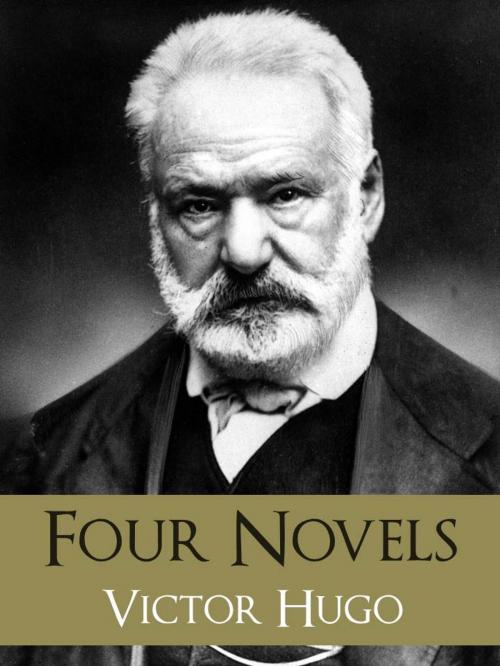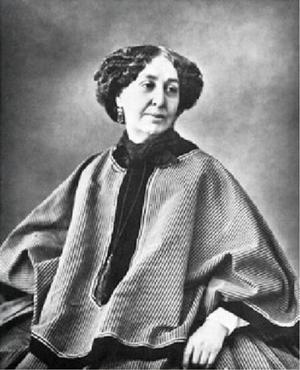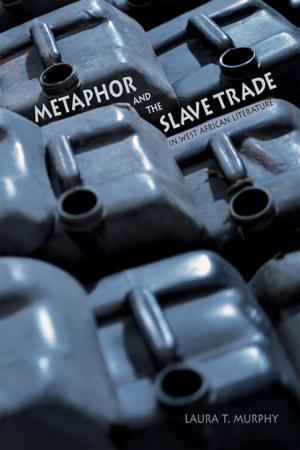The GREATEST WORKS of VICTOR HUGO: FOUR BESTSELLING NOVELS
LES MISERABLES, THE HUNCHBACK OF NOTRE DAME, THE LAST DAYS OF A CONDEMNED MAN, THE MAN WHO LAUGHS
Fiction & Literature, Movie & Television Tie-Ins, Classics, Literary| Author: | Victor Hugo | ISBN: | 1230000040348 |
| Publisher: | Les Miserables | Publication: | December 20, 2012 |
| Imprint: | Victor Hugo | Language: | English |
| Author: | Victor Hugo |
| ISBN: | 1230000040348 |
| Publisher: | Les Miserables |
| Publication: | December 20, 2012 |
| Imprint: | Victor Hugo |
| Language: | English |
THE GREATEST WORKS OF VICTOR HUGO: FOUR BESTSELLING NOVELS
(Worldwide Bestseller Over 20 Million Copies Sold) by VICTOR HUGO
Including LES MISERABLES, THE HUNCHBACK OF NOTRE DAME, THE LAST DAYS OF A CONDEMNED MAN, THE MAN WHO LAUGHS
TABLE OF CONTENTS
- The Last Days of a Condemned Man
- The Hunchback of Notre-Dame
- Les Miserables
- The Man Who Laughs
ABOUT The Last Days of a Condemned Man
The Last Day of a Condemned Man (French: Le Dernier Jour d'un Condamné) is a short novel by Victor Hugo first published in 1829. The novel recounts the thoughts of a man condemned to die.
A man who has been condemned to death writes down his cogitations, feelings and fears while he is waiting for his execution. He does not betray his name to the reader or what he has done, though he vaguely hints that he has killed someone. He describes his life in prison, everything from what his cell looks like to the personality of the prison priest. On the day he is to be executed he will see his three-year-old daughter for the last time, but she does not recognize him.
ABOUT The Hunchback of Notre Dame
The Hunchback of Notre-Dame (French: Notre-Dame de Paris, "Our Lady of Paris") is a novel by Victor Hugo published in 1831. The French title refers to the Notre Dame Cathedral in Paris, around which the story is centered.
Quasimodo, the deformed hunchback bell-ringer of Notre Dame, is introduced by his crowning as King of Fools. Esmeralda, a beautiful Gypsy with a kind and generous heart, captures the hearts of many men, including that of a Captain Phoebus, but especially those of Quasimodo and his adoptive father, Claude Frollo, the Archdeacon of Notre Dame. Frollo is torn between his lust and the rules of the church. He orders Quasimodo to kidnap her, but the hunchback is suddenly captured by Phoebus and his guards who save Esmeralda. Quasimodo is sentenced to be whipped and tied down in the heat. Esmeralda, seeing his thirst, offers him water. It saves him, and she captures his heart.
ABOUT Les Miserables
Les Miserables is an 1862 French novel by author Victor Hugo and is widely considered one of the greatest novels of the nineteenth century. It follows the lives and interactions of several French characters over a seventeen-year period in the early nineteenth century, starting in 1815 and culminating in the 1832 June Rebellion.
The novel focuses on the struggles of ex-convict Jean Valjean and his experience of redemption. It examines the nature of law and grace, and expatiates upon the history of France, architecture of Paris, politics, moral philosophy, antimonarchism, justice, religion, and the types and nature of romantic and familial love.
ABOUT The Man Who Laughs
The Man Who Laughs is a novel by Victor Hugo, originally published in April 1869 under the French title L'Homme qui rit. The novel places its narrative in 17th century England, where the relationships between the bourgeoisie and aristocracy are complicated by continual distancing from the lower class. Hugo's protagonist, Gwynplaine (a physically transgressive figure, something of a monster) transgresses these societal spheres by being reinstated from the lower class into the aristocracy -- a movement which enabled Hugo to critique construction of social identity based upon class status.
EXCERPT (Preface to Les Miserables)
"So long as there shall exist, by virtue of law and custom, decrees of damnation pronounced by society, artificially creating hells amid the civilization of earth, and adding the element of human fate to divine destiny; so long as the three great problems of the century—the degradation of man through pauperism, the corruption of woman through hunger, the crippling of children through lack of light—are unsolved; so long as social asphyxia is possible in any part of the world;—in other words, and with a still wider significance, so long as ignorance and poverty exist on earth, books of the nature of Les Misérables cannot fail to be of use."
ABOUT VICTOR HUGO
Victor-Marie Hugo (26 February 1802 – 22 May 1885) was a French poet, playwright, novelist, essayist, visual artist, statesman, human rights activist and exponent of the Romantic movement in France.
Victor Hugo's first mature work of fiction appeared in 1829, and reflected the acute social conscience that would infuse his later work. Le Dernier jour d'un condamné (The Last Day of a Condemned Man) would have a profound influence on later writers such as Albert Camus, Charles Dickens, and Fyodor Dostoevsky. Claude Gueux, a documentary short story about a real-life murderer who had been executed in France, appeared in 1834, and was later considered by Hugo himself to be a precursor to his great work on social injustice, Les Misérables. But Hugo's first full-length novel[citation needed] would be the enormously successful Notre-Dame de Paris (The Hunchback of Notre-Dame), which was published in 1831 and quickly translated into other languages across Europe. One of the effects of the novel was to shame the City of Paris into restoring the much-neglected Cathedral of Notre Dame, which was attracting thousands of tourists who had read the popular novel. The book also inspired a renewed appreciation for pre-renaissance buildings, which thereafter began to be actively preserved.
Hugo began planning a major novel about social misery and injustice as early as the 1830s, but it would take a full 17 years for Les Misérables, to be realized and finally published in 1862. Hugo was acutely aware of the quality of the novel and publication of the work went to the highest bidder. The Belgian publishing house Lacroix and Verboeckhoven undertook a marketing campaign unusual for the time, issuing press releases about the work a full six months before the launch. It also initially published only the first part of the novel ("Fantine"), which was launched simultaneously in major cities. Installments of the book sold out within hours, and had enormous impact on French society.
Les Misérables proved popular enough with the masses that the issues it highlighted were soon on the agenda of the French National Assembly. Today the novel remains his most enduringly popular work. It is popular worldwide, has been adapted for cinema, television and stage shows.
THE GREATEST WORKS OF VICTOR HUGO: FOUR BESTSELLING NOVELS
(Worldwide Bestseller Over 20 Million Copies Sold) by VICTOR HUGO
Including LES MISERABLES, THE HUNCHBACK OF NOTRE DAME, THE LAST DAYS OF A CONDEMNED MAN, THE MAN WHO LAUGHS
TABLE OF CONTENTS
- The Last Days of a Condemned Man
- The Hunchback of Notre-Dame
- Les Miserables
- The Man Who Laughs
ABOUT The Last Days of a Condemned Man
The Last Day of a Condemned Man (French: Le Dernier Jour d'un Condamné) is a short novel by Victor Hugo first published in 1829. The novel recounts the thoughts of a man condemned to die.
A man who has been condemned to death writes down his cogitations, feelings and fears while he is waiting for his execution. He does not betray his name to the reader or what he has done, though he vaguely hints that he has killed someone. He describes his life in prison, everything from what his cell looks like to the personality of the prison priest. On the day he is to be executed he will see his three-year-old daughter for the last time, but she does not recognize him.
ABOUT The Hunchback of Notre Dame
The Hunchback of Notre-Dame (French: Notre-Dame de Paris, "Our Lady of Paris") is a novel by Victor Hugo published in 1831. The French title refers to the Notre Dame Cathedral in Paris, around which the story is centered.
Quasimodo, the deformed hunchback bell-ringer of Notre Dame, is introduced by his crowning as King of Fools. Esmeralda, a beautiful Gypsy with a kind and generous heart, captures the hearts of many men, including that of a Captain Phoebus, but especially those of Quasimodo and his adoptive father, Claude Frollo, the Archdeacon of Notre Dame. Frollo is torn between his lust and the rules of the church. He orders Quasimodo to kidnap her, but the hunchback is suddenly captured by Phoebus and his guards who save Esmeralda. Quasimodo is sentenced to be whipped and tied down in the heat. Esmeralda, seeing his thirst, offers him water. It saves him, and she captures his heart.
ABOUT Les Miserables
Les Miserables is an 1862 French novel by author Victor Hugo and is widely considered one of the greatest novels of the nineteenth century. It follows the lives and interactions of several French characters over a seventeen-year period in the early nineteenth century, starting in 1815 and culminating in the 1832 June Rebellion.
The novel focuses on the struggles of ex-convict Jean Valjean and his experience of redemption. It examines the nature of law and grace, and expatiates upon the history of France, architecture of Paris, politics, moral philosophy, antimonarchism, justice, religion, and the types and nature of romantic and familial love.
ABOUT The Man Who Laughs
The Man Who Laughs is a novel by Victor Hugo, originally published in April 1869 under the French title L'Homme qui rit. The novel places its narrative in 17th century England, where the relationships between the bourgeoisie and aristocracy are complicated by continual distancing from the lower class. Hugo's protagonist, Gwynplaine (a physically transgressive figure, something of a monster) transgresses these societal spheres by being reinstated from the lower class into the aristocracy -- a movement which enabled Hugo to critique construction of social identity based upon class status.
EXCERPT (Preface to Les Miserables)
"So long as there shall exist, by virtue of law and custom, decrees of damnation pronounced by society, artificially creating hells amid the civilization of earth, and adding the element of human fate to divine destiny; so long as the three great problems of the century—the degradation of man through pauperism, the corruption of woman through hunger, the crippling of children through lack of light—are unsolved; so long as social asphyxia is possible in any part of the world;—in other words, and with a still wider significance, so long as ignorance and poverty exist on earth, books of the nature of Les Misérables cannot fail to be of use."
ABOUT VICTOR HUGO
Victor-Marie Hugo (26 February 1802 – 22 May 1885) was a French poet, playwright, novelist, essayist, visual artist, statesman, human rights activist and exponent of the Romantic movement in France.
Victor Hugo's first mature work of fiction appeared in 1829, and reflected the acute social conscience that would infuse his later work. Le Dernier jour d'un condamné (The Last Day of a Condemned Man) would have a profound influence on later writers such as Albert Camus, Charles Dickens, and Fyodor Dostoevsky. Claude Gueux, a documentary short story about a real-life murderer who had been executed in France, appeared in 1834, and was later considered by Hugo himself to be a precursor to his great work on social injustice, Les Misérables. But Hugo's first full-length novel[citation needed] would be the enormously successful Notre-Dame de Paris (The Hunchback of Notre-Dame), which was published in 1831 and quickly translated into other languages across Europe. One of the effects of the novel was to shame the City of Paris into restoring the much-neglected Cathedral of Notre Dame, which was attracting thousands of tourists who had read the popular novel. The book also inspired a renewed appreciation for pre-renaissance buildings, which thereafter began to be actively preserved.
Hugo began planning a major novel about social misery and injustice as early as the 1830s, but it would take a full 17 years for Les Misérables, to be realized and finally published in 1862. Hugo was acutely aware of the quality of the novel and publication of the work went to the highest bidder. The Belgian publishing house Lacroix and Verboeckhoven undertook a marketing campaign unusual for the time, issuing press releases about the work a full six months before the launch. It also initially published only the first part of the novel ("Fantine"), which was launched simultaneously in major cities. Installments of the book sold out within hours, and had enormous impact on French society.
Les Misérables proved popular enough with the masses that the issues it highlighted were soon on the agenda of the French National Assembly. Today the novel remains his most enduringly popular work. It is popular worldwide, has been adapted for cinema, television and stage shows.















